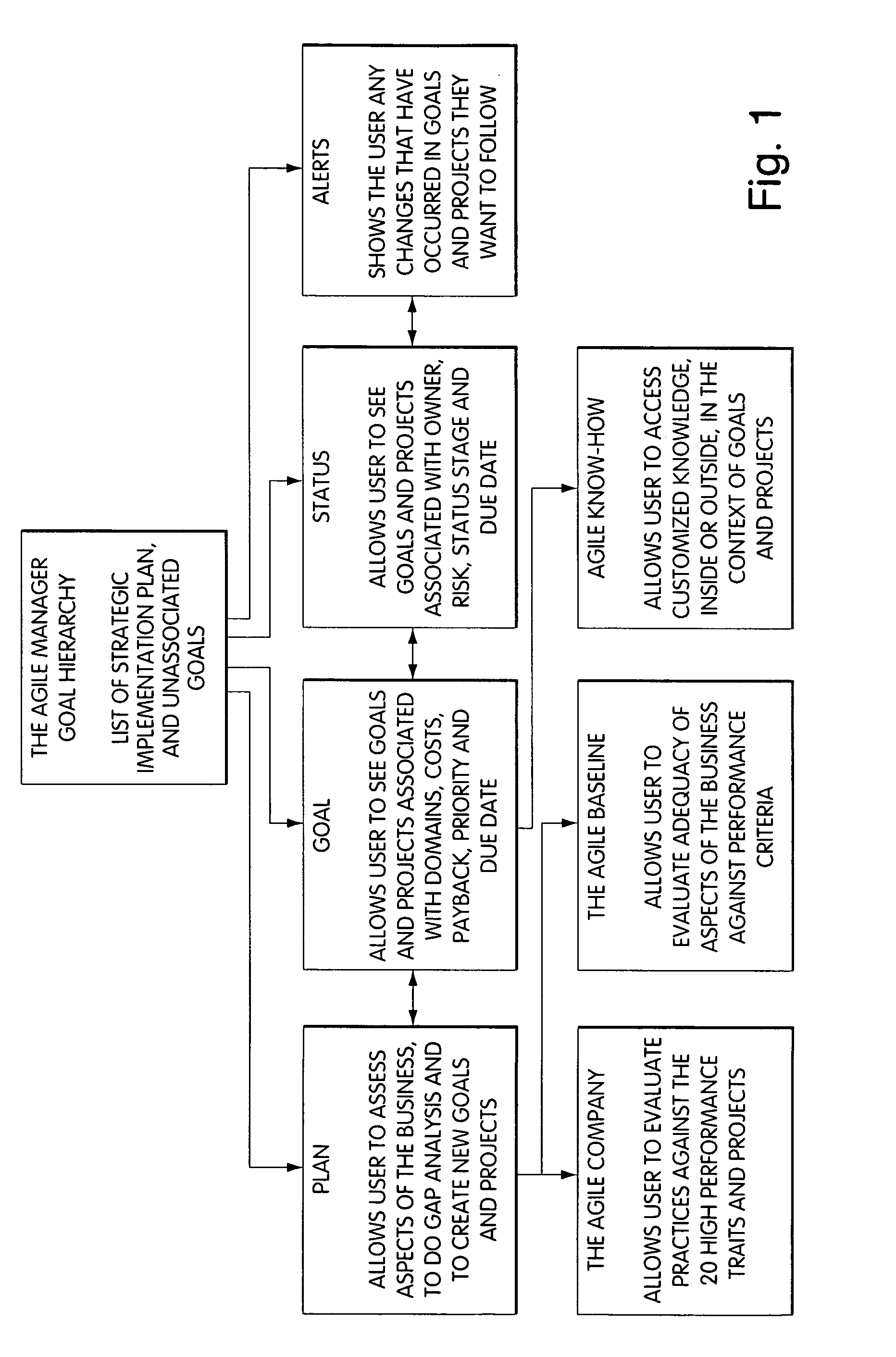System for performing collaborative tasks
a technology for performing collaborative tasks and systems, applied in the field of systems for improving communication, can solve problems such as restricting the usefulness of the system, requiring extensive programming, and difficult and sometimes impossible communication between programming specialists and users
- Summary
- Abstract
- Description
- Claims
- Application Information
AI Technical Summary
Problems solved by technology
Method used
Image
Examples
Embodiment Construction
4101: FIG. 42
[0207] In a preferred embodiment of the system for collaborative work, the model which provides a context for the collaborative work is defined by tables in a standard commercial relational database system produced by Oracle Corp., Redwood City, Calif. In relational database systems, the data is stored in tables. A table is made up of rows and columns. Each row has a field for each of the columns. A column specifies a kind of data value and a row represents an entity which has values of the kinds specified by the column. For example, in a table for storing personal information, the columns might be called last_name, first_name, m_i, street_addr, and so forth, with each row representing a person and the fields in the row having the appropriate values for that person. The values of certain of the fields in the row may uniquely identify the row in the table. Such values are termed keys for the rows.
[0208] FIG. 42 shows the tables that are relevant to models such as the one...
PUM
 Login to View More
Login to View More Abstract
Description
Claims
Application Information
 Login to View More
Login to View More - R&D
- Intellectual Property
- Life Sciences
- Materials
- Tech Scout
- Unparalleled Data Quality
- Higher Quality Content
- 60% Fewer Hallucinations
Browse by: Latest US Patents, China's latest patents, Technical Efficacy Thesaurus, Application Domain, Technology Topic, Popular Technical Reports.
© 2025 PatSnap. All rights reserved.Legal|Privacy policy|Modern Slavery Act Transparency Statement|Sitemap|About US| Contact US: help@patsnap.com



